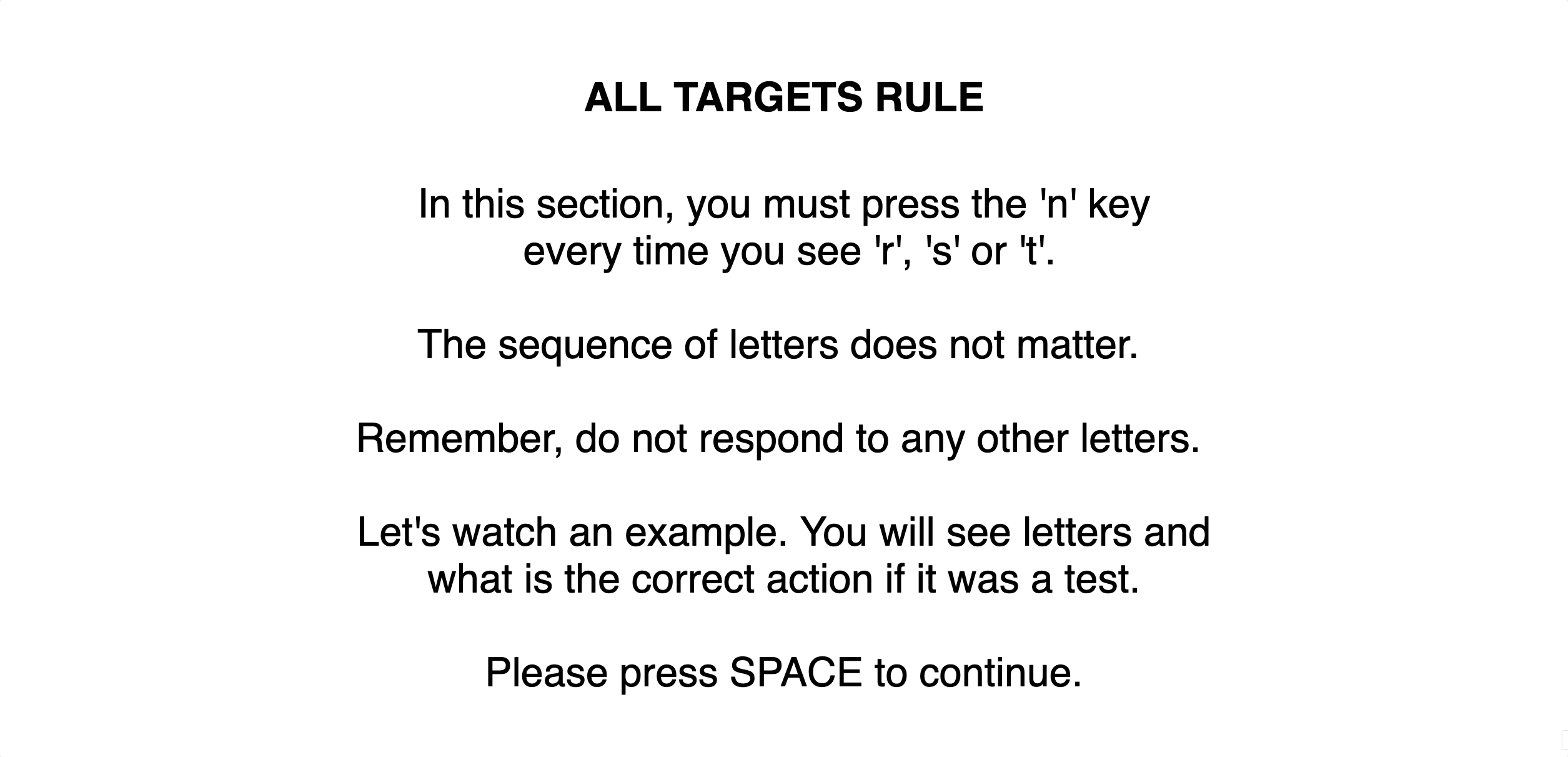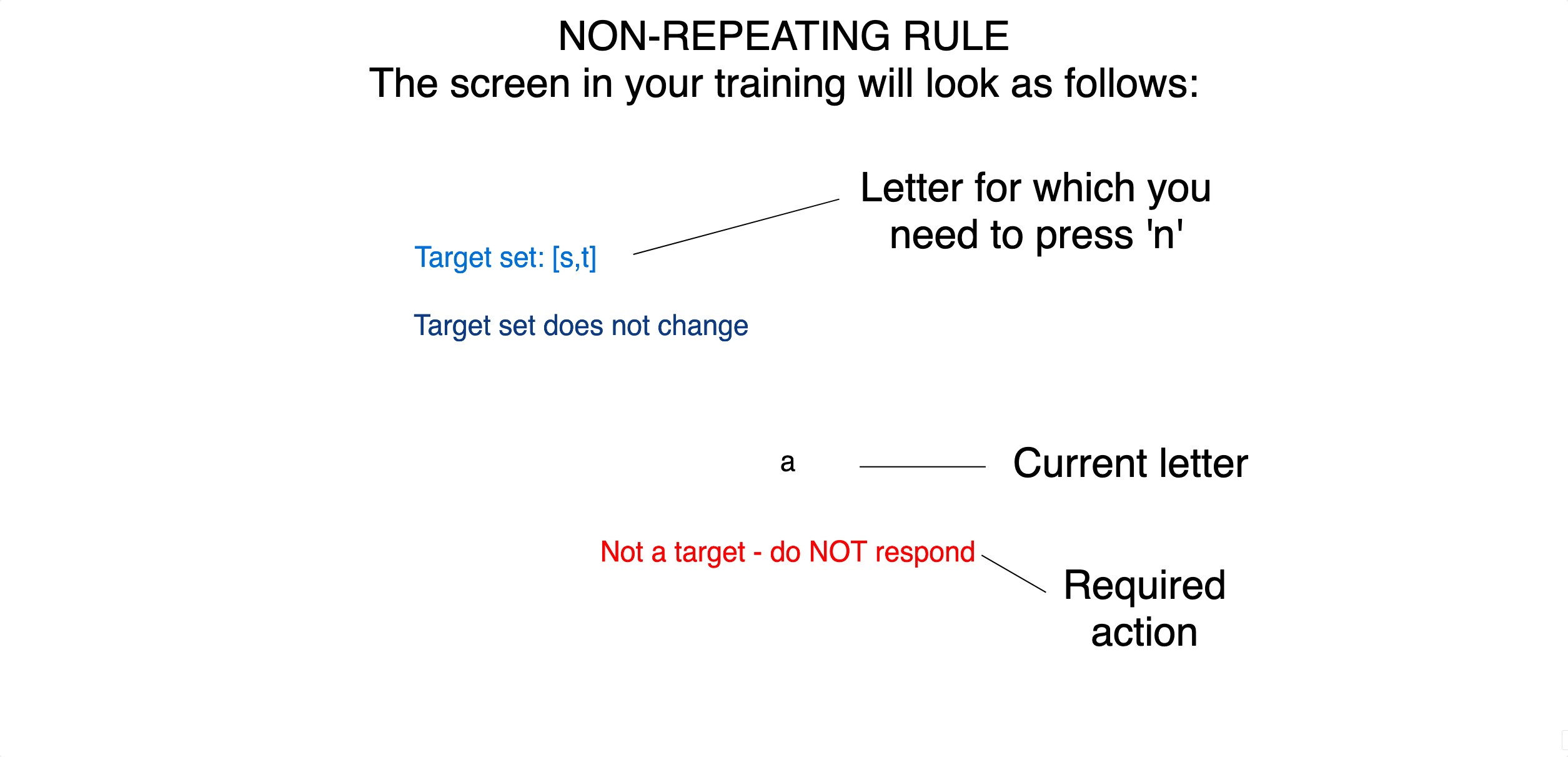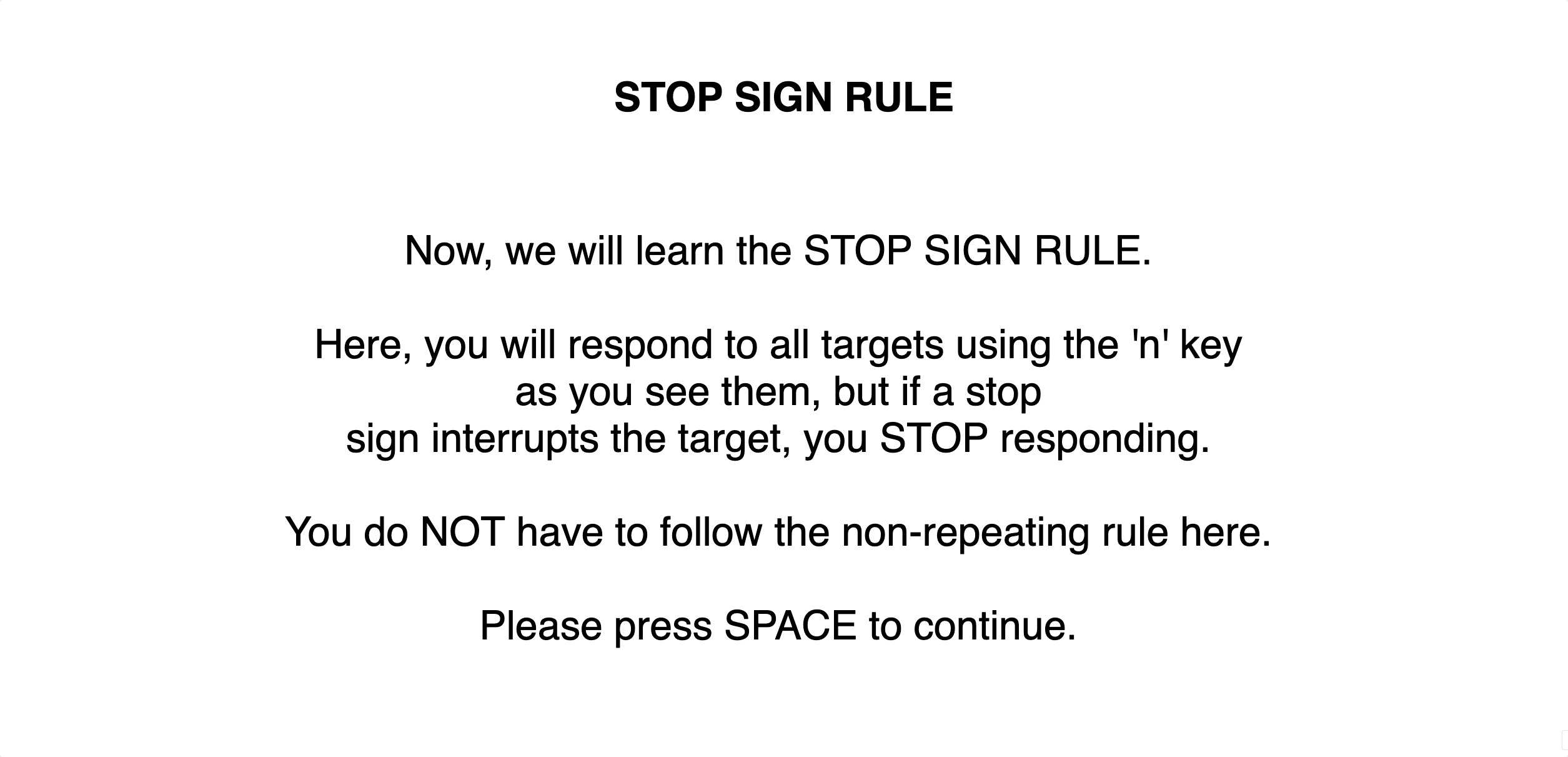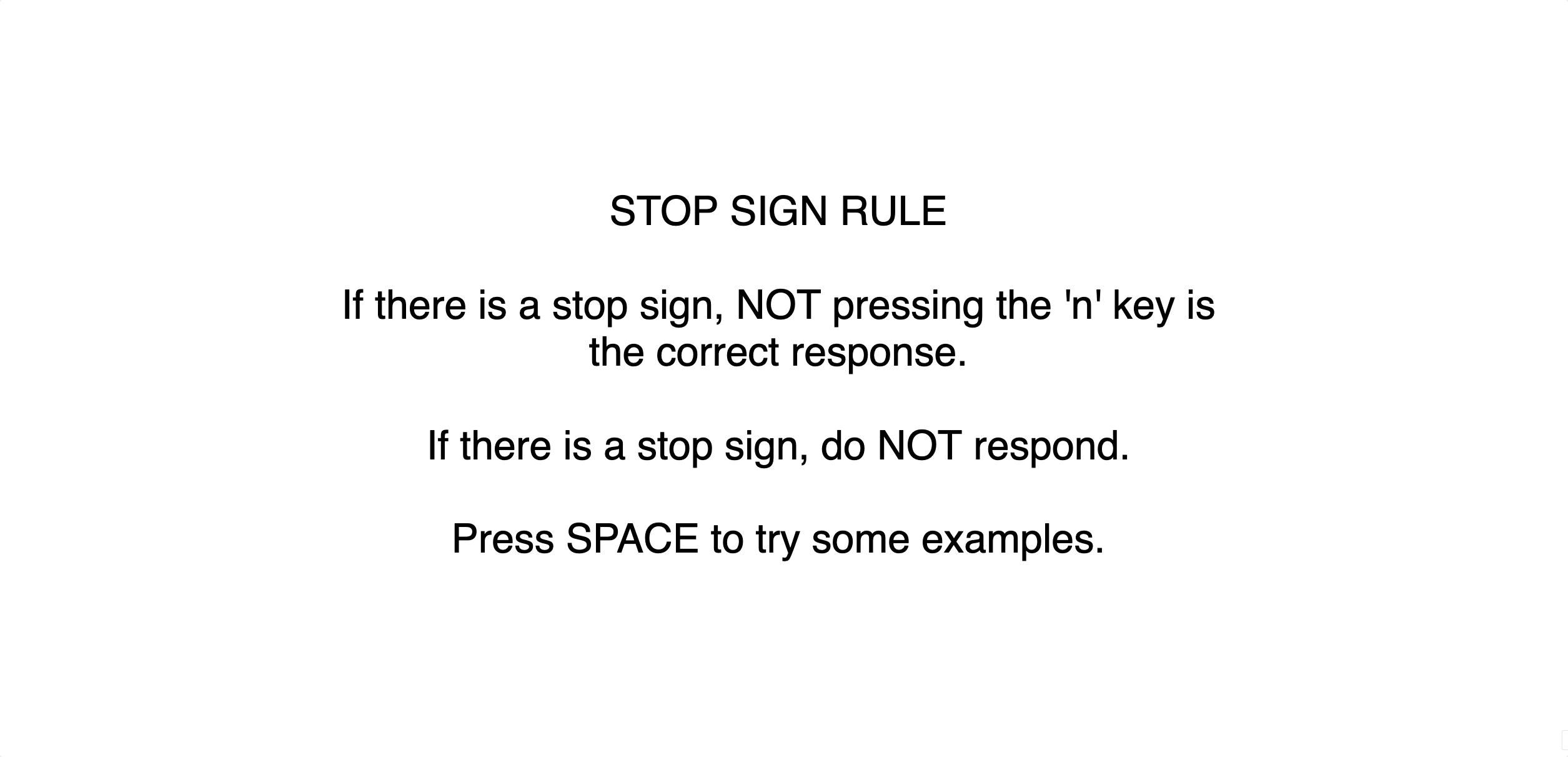Parametric Go/No Go Task (PGNG)¶
Abstract¶
Traditional neuropsychological measures of executive functioning are difficult to employ in functional imaging and clinical trial contexts and have tremendous practice effects. They also have poor sensitivity and specificity, while test–retest reliability is often not assessed in computer-based tests. The present study evaluates some psychometric properties of a new Parametric Go/No-Go (PGNG) Task. The PGNG consists of three levels of difficulty assessing attention, set-shifting, and processing speed, with the two more difficult levels assessing inhibitory control. A total of 63 healthy control participants were recruited at two sites to evaluate the psychometric properties of the PGNG. The PGNG was found to have solid parametric characteristics and strong test–retest reliability. Modest convergent validity was also demonstrated with other executive-functioning tests. Learning effects were significantly less than those for the Trail Making Test. The present results provide solid initial support for the validity and reliability of the PGNG.
Reference¶
Description¶
Three level task where strings of letters are briefly presented (750~ms) and participants must identify when one of two or three targets is presented. In the first level (L1), which measures sustained attention, participants must respond whenever one of three targets is presented. In the second level (L2), which measures inhibitory control, two targets are presented, but the participant must respond only when the target does not repeat. The third level (L3), which measures set-shifting ability, uses the same non-repeating rule as the second level, but there are three targets.
L1: percent correct responses to target;
L2: percent correctly inhibited to repeated targets;
L3: percent correct responses to targets
Note
In the experiment and in the analysis, only the first two levels were used and the last Stop Signal task was not used.
PCTT: Percentage correct target trials (also PCT—measuring sustained attention and set maintenance) is computed by dividing the correct target responses by the total number of possible target responses for the respective level of the task;
PCIT: Percentage correct inhibitory trials (also PCI) is computed by dividing the total number of correct inhibitory trials by the total number of potential inhibitory trials.





